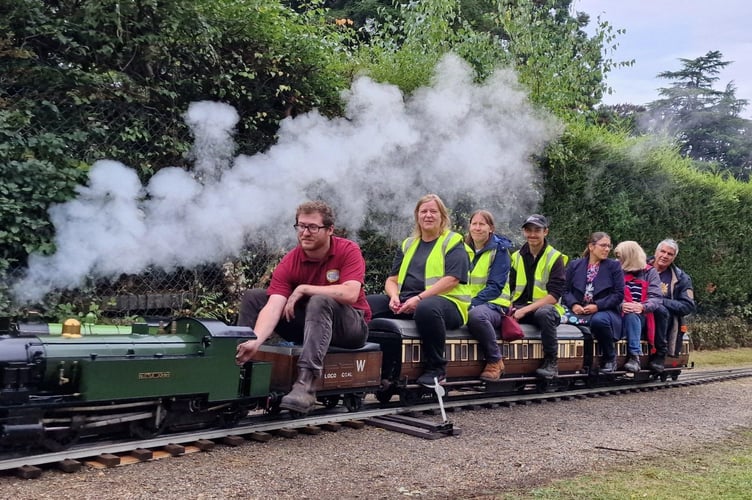
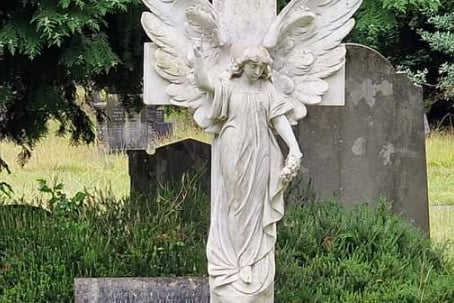
Brookwood 170
Last week I made a brief mention of the Brookwood 170 anniversary and that the Grade I site would be opening its gates as part of the Heritage Open Days Weekend.
We went along as a family. We have had long connections with the cemetery, dating back to my great grandmother, Agnes Mitchell, who was buried there in 1932. I well remember going with my mother and grandmother to visit Granny‘s Grave.
It took me a while to work out that this was mummy’s granny and not granny’s granny – but that hardly mattered because I loved the stone angel which guards her grave. I would be tasked with getting water from the pump to clean the angel. Since those far-off days I have never been able to locate the site of that pump.
I would visit the Freshfield grave near to Agnes's: it was fenced around, like a garden, and there was a huge memorial to Henry Douglas Freshfield, 1877-91, which showed a picture of the boy, which fascinated me.
I loved the enormous rhododendron and azalea bushes which thrive in that soil. I could hide from mummy and granny in those bushes. They have now been tamed – I know it was for their own good but it is harder to play hide and seek than it used to be.
That may be down to my age as much as the cutting back of the bushes. The grounds are so improved since the council took over the upkeep.
I also remember driving along Cemetery Pales in granny’s Morris 8 and bumping over the route of the old Necropolis Railway. So last Saturday's visit was particularly interesting because Mizens Railway had laid their tracks on the site of the original Cemetery Railway, now known as Railway Avenue, and were offering rides.
There were long queues and during the day – what a brilliant idea to lay that on.
Even today I suspect there are people who drive along Cemetery Pales and probably don't even know the name of the road off the A322 to Pirbright. Perhaps they think those long walls hide some grand estate. Perhaps some of those people were among the several thousand who turned up to look at what is beyond those walls.
The reason for the railway was to bring coffins and mourners from the private station adjacent to Waterloo directly into the cemetery where there were two stations: one for the Nonconformist section and the other for the Anglican area. The London station was bombed on the night of 16/17 April 1941 and never rebuilt.
The cemetery is known for its wildlife – as demonstrated by Sir David Attenborough in his Wild Isles series of television programmes. But on this occasion there were some unusual visitors, thanks to Birstall Birds of Prey – and very impressive they were. I suspect photographs of them will be entered into the photographic competiton and I shall be very interested to see the winning entries.
For the weary and thirsty The Trench Experience supplied a cafe cum museum. The food was delicious and the only thing missing was Yvette Carte-Blanche telling us she would say zis only once.
The Trench Experience is a charity and the secretary is Edward Jones, but on that day he was definitely mine host. Although I did not notice him welcoming visitors with a friendly ‘allo, ‘allo.
This little museum – if that is the correct term – is well worth a visit with its replica First World War trench, as you would expect from the place’s title. There are also various bits and pieces, including books, on sale, but not in such variety as the shop when it was in Commercial Way, from where I once bought a very large wardrobe.
It is hardly surprising that, as my family have all lived in the area all their lives, that we kept meeting people we knew. My friends, my daughters’ friends, my grand-daughter’s friends and friends from school, college, work, clubs – wherever. Even friends from New Zealand, although they had not come to the UK expressly to visit the cemetery, though, of course, many do make such a pilgrimage, especially to the military section and war graves.
I was impressed that the leader of Woking Borough Council, Ann-Marie Barker, sought me out to chat. Surprised, too, because I am usually nagging her about the naming of Henry Plaza which is named for Henry Cawsey, although no mention is made of that in the plaza (which, I think, being in England, should be a place not a plaza, despite there being Wells Plaza.)
She did not waver and told me, as she has told me before, that there will be an explanatory notice in the plaza/place eventually.
If you read of a postbox for letters to heaven you just might think of Cold War dead letterboxes as used by spies. The white box at Brookwood was something entirely different: an opportunity to write to a dead friend or relative and know that what you wrote was private and secure. Writing materials were supplied, and no stamp required.
There are always times when you wish you could share something with someone no longer around. I wonder how many of the letters described the Brookwood scene on that day. We shall never know.
In his welcoming speech Cllr Ian Johnson explained the idea.
“Thank you for being here on the 170th anniversary of this cemetery, and to Avril Kirby, cemetery manager, for inviting me to say a few words. It is a special place beautifully cared or by Avril and her small team,” he said.
“My attention was drawn by my wife Rosemary to a BBC news story about a young girl, Matilda Hendy, in Nottinghamshire who wanted to write to her grandparents who had passed away and she missed.
“The idea of a letter to heaven postbox came about and lots have now been provided around the country. I asked Avril if we could have one and here it is: our special postbox. People grieve in different ways and this is just one way: by posting a card or letter to a special person we have loved and are no longer with us.
“Letters posted here will be treated respectfully, won’t be opened, and will be buried in the cemetery.
‘Experience around the country is that the postboxes are appreciated and I hope our local people will find some comfort in posting to loved ones here.
“I'd like to thank Avril, and Caroline Harington, for getting this postbox .”


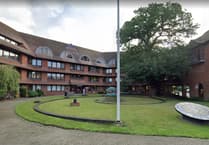
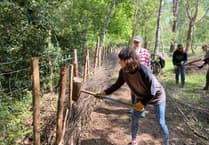
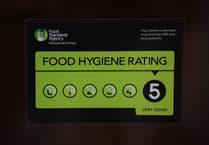
Comments
This article has no comments yet. Be the first to leave a comment.